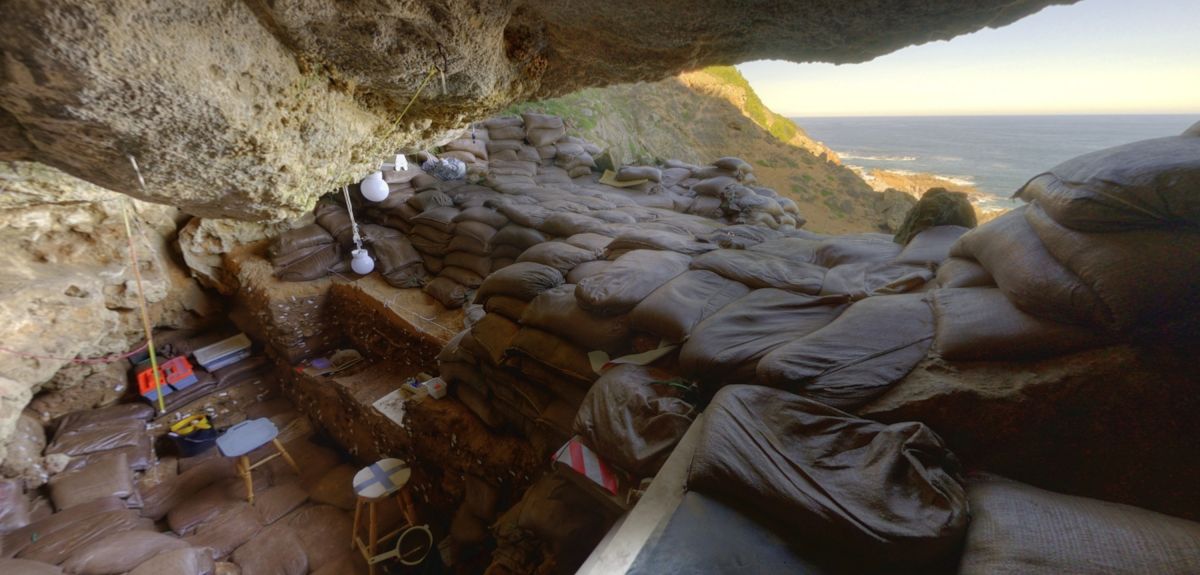
Credit: Chris Henshilwood
Innovation of Stone Age humans 'not linked with climate change'
The cultural and technological innovations of Middle Stone Age humans in Southern Africa may not be directly linked to climate, according to new research.
Environmental records obtained from archaeological sites where there are Middle Stone Age deposits are the subject of the study published in the journal, PLOS ONE. Patrick Roberts from the University of Oxford, and colleagues, find that the Middle Stone Age marked a period of dramatic change among early humans in southern Africa. Some scholars had suggested that climate change primarily drove technological and cultural innovations such as bone tools, ochre production, and personal ornamentation.
Coauthor Julia Lee-Thorp, Professor of Archaeological Science at the University of Oxford, comments: 'Climate change has often been invoked as a driver of early cultural and technological innovation by our species; however, solid evidence for proving such links has been weak.'
The authors of this study tested the theory by carrying out analyses of animal remains, shellfish taxa and the stable carbon and oxygen isotope measurements in ostrich eggshell from two archaeological sites, Blombos Cave and Klipdrift Shelter, spanning 98,000 to 73,000 years ago and 72,000 to 59,000 years ago, respectively. This data would shed light on possible palaeoenvironmental conditions in southern Africa at the time. For instance, carbon and oxygen stable isotope levels in ostrich eggshell can tell us what vegetation was eaten and the amount of water drunk.
The researchers found that climatic and environmental variation, reflected in ostrich eggshell stable isotope measurements, faunal records, and shellfish indicators, was not in sync with Middle Stone Age human technological and cultural innovation at these two sites. While acknowledging that climate and environmental shifts may have influenced human subsistence strategies, the researchers suggest climate change may not have been the driving factor behind cultural and technological innovations in these locations.
... changes in the tools or culture produced by humans can be linked to various demographic, environmental or social contexts and not just one single explanation.
Patrick Roberts from the School of Archaeology
Lead author Patrick Roberts, from the School of Archaeology, says: 'I think that the human brain is unique in its flexibility – what neuroscientists call metaplasticity – to adapt to different climatic, environmental, and social situations.
'As such, any changes in the tools or culture produced by humans can be linked to various demographic, environmental or social contexts and not just one single explanation. This is what has made us able to respond to a number of extreme climatic changes, remain on the planet when our Neanderthal and other hominin relatives disappeared or became extinct. It is also why humans were able to occupy almost every environment on Earth.'
The paper, 'Climate, Environment and Early Human Innovation: Stable Isotope and Faunal Proxy Evidence from Archaeological Sites (98-59ka) in the Southern Cape, South Africa', is published by PLOS ONE.
 New study estimates NHS England spends 3% of its primary and secondary care budget on the health impacts of temperature
New study estimates NHS England spends 3% of its primary and secondary care budget on the health impacts of temperature
 International collaboration launches largest-ever therapeutics trial for patients hospitalised with dengue
International collaboration launches largest-ever therapeutics trial for patients hospitalised with dengue
 Oxford-built multi-agent assistant for cancer care to be piloted in collaboration with Microsoft
Oxford-built multi-agent assistant for cancer care to be piloted in collaboration with Microsoft
 World's first Phase II Nipah virus vaccine trial launch
World's first Phase II Nipah virus vaccine trial launch